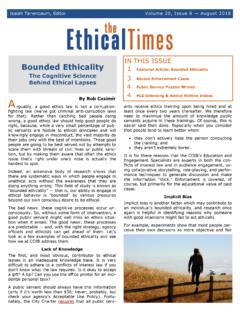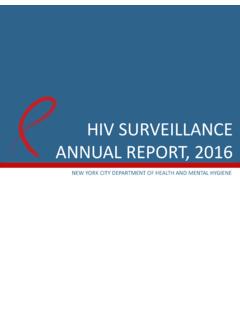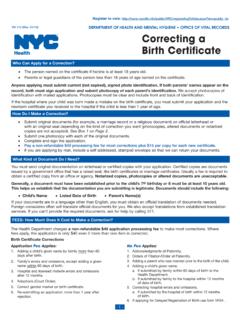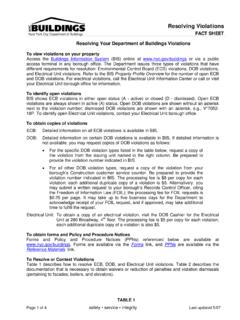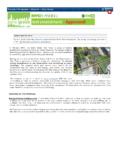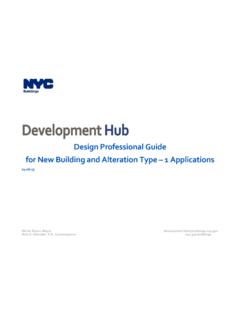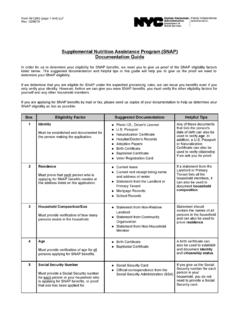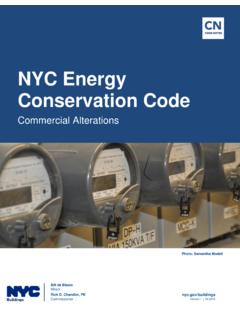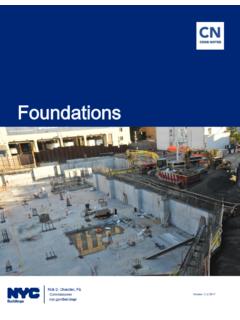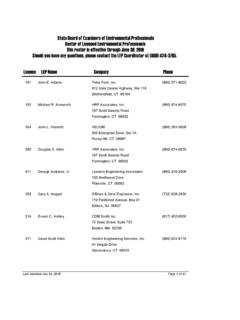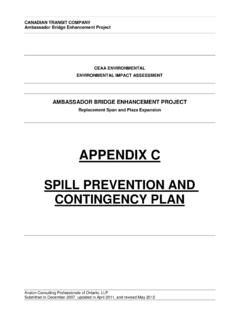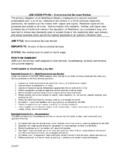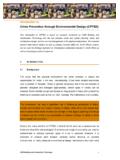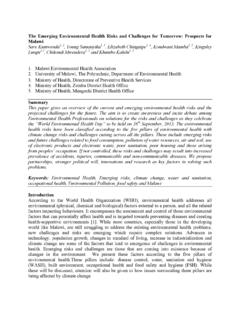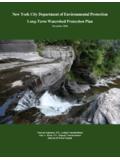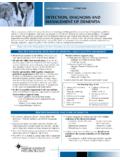Transcription of Childhood asthma and environmental triggers
1 asthma is a common lung disease that affects both children and adults. In New york city , more than one in every 10 children under the age of 12 have asthma . During an asthma episode (attack), the airways in the lungs swell, making it hard to breathe. While asthma cannot be cured, it can be controlled. People with asthma can live active, healthy lives. To control your child s asthma , make sure they take medications as prescribed and avoid triggers . triggers can cause asthma attacks or make asthma symptoms worse; they are found inside and outside the home. Everyone s triggers are different, so it is important to keep track of what affects your child s asthma . Below are some common triggers and ways to avoid them: Childhood asthma and environmental triggersLOCATIONTRIGGERWHAT YOU CAN DOOutdoorsVery cold or very hot weatherCheck the weather report every day for: Extreme temperatures (very hot or very cold) Air pollution levels (also known as air quality index) Pollen countsAir pollutionLimit time outside and heavy exercise on extremely hot or cold days, or when air pollution levels or pollen counts are windows closed during pollen seasons.
2 Use air conditioning on recirculation mode to avoid letting in outside air, if and IndoorsCold and flu virusesWash hands frequently to prevent cold and a flu shot every clutter and dust regularly. Mop, vacuum, and use microfiber or wet cloths. Sweeping spreads dust around and can make asthma symptoms worse. Tobacco smokeQuit smoking and do not allow smoking inside your home or car. Pet danderDo not allow furry pets on furniture or in the room(s) where children with asthma and mildewAir out damp areas ( , bathroom, kitchen) to prevent mold and mildew. Fix leaks and remove any standing with strong smells ( , cleaning products, paint, deodorizers, air fresheners)Avoid using chemicals with strong smells. If you must use them, use the smallest amount possible and open windows or use fans to get rid of ( , cockroaches, mice)Pest proof your - EnglishChildren with asthma living in pest-free homes have fewer symptom days, hospital stays and school absences than those living in homes with pests.
3 Cockroaches and mice affect indoor air quality and can trigger allergic reactions or asthma attacks. Remove garbage, fix leaks and seal cracks to get rid of the food, water and shelter pests need to live. This safe pest control method is called Integrated Pest Management or IPM. KEEP YOUR HOME CLEAN AND DRY:MANAGE GARBAGE: Keep food in sealed containers. Keep counters and sinks free from food waste and dirty dishes. Get rid of clutter, such as cardboard, newspapers and paper bags. Do not leave pet food out overnight. Use garbage cans with tight-fitting lids. Rinse recyclables before putting them in recycling bins. Take garbage and recycling out every day. Tie up garbage bags before putting them in compactor chutes. Do not put loose garbage or open bags in chutes, and do not overstuff compactor chutes.
4 For more information about safe and effective pest control, visit more information about controlling your child s asthma , visit , or call 311 and ask for Healthy proof your home to reduce asthma triggersIF OTHER PEST CONTROL MEASURES ARE NEEDED: Use bait stations and gel for cockroaches and ants. Use traps for mice. Never use foggers, sprays, bombs or loose rodent bait. Never use illegal or unlabeled pesticides such as Tres Pasitos, Chinese Chalk or Tempo. Store pesticides safely and place traps where children and pets can t get to WATER LEAKS, HOLES AND PESTS TO BUILDING STAFF: Let building staff into your home to make any needed repairs. Let pest management professionals into your home for pest control services. Be sure to tell them if there are children or pets in the home.
5 If you see pests, tell your landlord immediately. If your landlord does not fix the problem, call 311.
